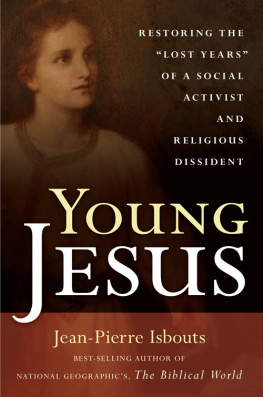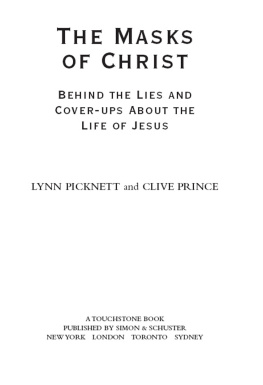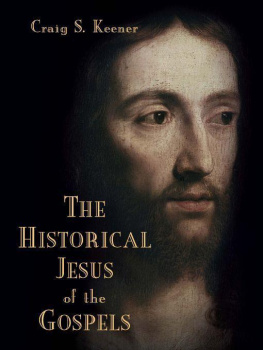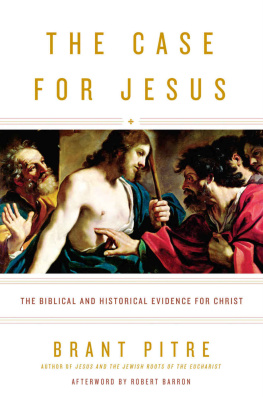YOUNG
JESUS
RESTORING
THE LOST YEARS
OF A SOCIAL
ACTIVIST AND
RELIGIOUS DISSIDENT
Jean-Pierre Isbouts

For my mother and father
STERLING and the distinctive Sterling logo are
registered trademarks of Sterling Publishing Co., Inc.
Library of Congress Cataloging-in-Publication Data Available
2 4 6 8 10 9 7 5 3 1
Published by Sterling Publishing Co., Inc.
387 Park Avenue South, New York, NY 10016
2008 by Jean-Pierre Isbouts
All rights reserved
Sterling ISBN-13: 978-1-4027-5713-6
Sterling eBook ISBN: 978-1-4027-9897-9
For information about custom editions, special sales, premium and
corporate purchases, please contact Sterling Special Sales
Department at 800-805-5489 or specialsales@sterlingpublishing.com.
Why another book about Jesus? Havent we heard everything there is to know about this charismatic figure from first-century Palestine? The answer is: not really. Most writings invariably focus on the period of Jesus ministry and his Passion, which altogether comprise no more than the last two or three years of his life. Few books written for a general audience have tackled one of the last remaining mysteries about Jesus, which is the question of what really happened during the lost years of his youth and adolescence. To truly understand a mans motives and actions, modern psychology tells us, we must first understand what happened during his formative years. In fact, the inquiry is particularly revealing in the case of Jesus. As this book will attempt to show, the principal impetus for Jesus work as a social activist and religious dissident was his experience of growing up in Galilee at a time of an intense social and economic crisis.
This book would not have been possible, however, if the last two decades had not seen an explosion of exciting discoveries about the historical Jesus, especially in the fields of historical, anthropological, archaeological, psychological, socioeconomic, and literary research. Unfortunately, most of these discoveries were published in scholarly journals not readily available to the general public. Whats more, many scholars tend to operate within the confines of their particular expertise. For example, experts engaged in biblical exegesis (interpretation of biblical texts) tend to focus on this subject area without necessarily involving consonant information from the realms of, say, forensic paleoanthropology or socioeconomic reconstruction. Similarly, authors approaching the Jesus material from a purely archeological perspective may not always include insights from modern source and form criticism that have been so useful in excavating the underlying strata of the gospels and other texts from antiquity.
My goal with this book, then, is to use the most dramatic insights from all these diverse fields of expertise as building blocks to reconstruct the youth, adolescence and early adulthood of Jesus. In doing so, I have also availed myself of models not previously used in the study of the historical Jesus, namely recent investigations into the psychological effects of peasant displacement in modern rural societies that bear a close resemblance to the conditions of first-century Galilee.
The result is a reconstruction of a Jesus who, I hope, is bound to fascinate modern readersparticularly young people who, like Jesus, look upon the world with that curious blend of compassionate idealism and revolutionary fervor that is the prerogative of youth. That is why I wanted to tell this story. Though this portrait of Jesus is not intended to replace the traditional image of Jesus as the Christ, it will forcefully remind us of the very roots of Jesus activism and the desperate social conditions that fired his career as a charismatic healer and religious reformer. Young Jesus is, quite simply, the story of a young man who found himself caught up in the maelstrom of intense political and economic crisis, and responded with a unique and highly individual program of reform.

Any attempt to reconstruct the life of the historical Jesus is bound to resort to speculation, and this book is no exception. Though we know the biographical details of many other figures in antiquity, we have no inconvertible proof of who Jesus was, when he lived, or where he spent much of his time, much as we would like to believe otherwise. In some ways, we know more about prophets who lived many centuries before Jesus, such as Jeremiah, than we do about Jesus himself. The reason is that Jesus was a Galilean peasant. He was neither a powerful king, inevitably the subject of history writers, nor affluent enough to afford a personal scribe, as Jeremiah was. The oldest written texts about Jesus, set down by Paul, date to the mid-fifties C.E., more than twenty years after his death on the cross, and they contain very little biographical data. We therefore have to rely on the gospels as well as on circumstantial evidence, both literary and forensic, to reconstruct the life of the man from Nazareth, and we have to use our best judgment to decipher that data. Naturally, interpreting ancient circumstantial evidence is by no means an exact science. No author can ever claim to know for certain whether his or her interpretation is correct. But, of course, that is precisely what makes the effort so exciting.

This book is written from a nondenominational, secular perspective for anyone interested in the early years of the historical Jesus. As such, the book may resonate with thinking Christians who wish to deepen their understanding of the role of Jesus in their lives. By the same token, I hope Jewish readers will experience a kinship with their own roots from the first-century Second Temple period and with a man who, but for tragic historical incident, might have been a great rabbinic sage of Judaism. Muslim readers too, I trust, may find sympathy with these new insights into Isa or Jesusa man who, after Muhammad and Musa (Moses), is one of the most important figures in the Quran. Jesus was above all a man of mercy and compassion, the foremost attribute of both Yahweh and Allah, just as the word for mercyRachmanis the same in Hebrew and Arabic. At the same time, I hope that nonreligious readers may gain a better understanding of the foundations of the Christian ethics that continue to influence the progress of Western civilization.
With all these readers in mind, the book will use terms and indicators recognizable to all denominations. For example, we will refer to the Biblewhat Christians call the Old Testamentas the Hebrew Scriptures, and often distinguish between the three principal divisions of the Hebrew Bible, that is, the Torah or Law (also referred to as the Covenant Law); the Neviim or Prophets; and the Ketuvim or Writings. The first two divisions, the Law and the Prophets, were groupings that Jesus was undoubtedly familiar with, as many of his statements show. Though the third division, that of the Writings, was still being formed in the first-century C.E., we do assume that Jesus knew some of the books, specifically the Psalms. Similarly, we will use both the Christian term God as well as the Jewish appellation YHWH (the tetragrammaton denoting Yahweh).
The Hebrew Scriptures have come down to us in Hebrew (with certain segments in Aramaic) or, in the case of the Septuagint, in a translation in Greek (which in turn was used for the English translation of the Old Testament). The New Testament is also written in Greek, though in a common patois known as
Next page







